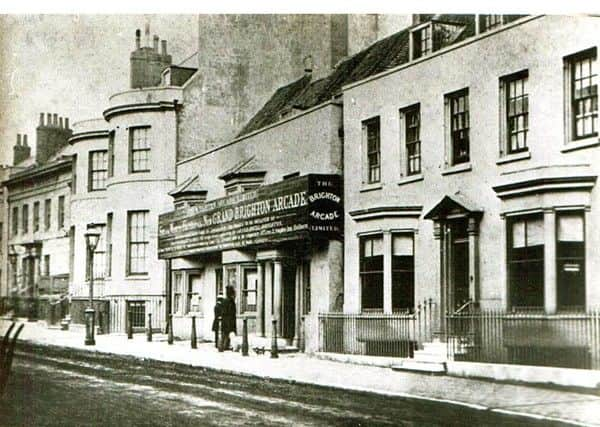A miraculous survivor that can still be found in West Street


Whenever I happen to pass that way, I touch the old post. Call it, if you like, a sort of fetishistic contact with the past. The post stands on the east side of West Street, though I wonder how many of the hordes of holidaymakers, hen parties, and drunks who pour down this canyon of clubs, pubs, arcades and nosh emporia, even notice it.
It is all that remains of the Thrales' house, a miraculous survivor (for the site has been redeveloped umpteen times) of the row of cast-iron bollards that once stood sentinel in front of their bay windows. (An old sketch shows five, linked with chains; a photograph reveals seven or eight.) It is also practically all that remains of an epoch when West Street was one of Brighton's most select streets. A plaque on the wall records: 'Immediately to the south of this building stood the house occupied by Hester and Henry Thrale, where Samuel Johnson and Fanny Burney were frequent visitors.' Immediately to the south nowadays is the defunct Creation nightclub; cars are parked where the Thrales' porticoed entrance stood.
Advertisement
Hide AdAdvertisement
Hide AdIt was to stay with their friend Richard Scrase that the Thrales first visited Brighton; in 1767, they built their own holiday home, described by the historian JA Erredge as a 'low, stone-coloured, brick building'. Henry was a wealthy brewer, Hester his vivacious Welsh wife; their Streatham artistic salon renowned. No sooner had they met Dr Johnson than they bore him away to Brighton, which the great Londoner famously found dull and depressing, 'the


world's end', with not so much as one tree to hang oneself from. Novelist Burney enjoyed it better, sitting in the bow window as she scribbled acerbic remarks on the inhabitants in her diary. Her father, the musician Charles Burney, also visited, and Sir Joshua Reynolds, and Samuel Foote the one-legged comedian, and vain Richard Cumberland, the playwright, and morose Topham Beauclerk. And it was in Brighton that Hester met (or re-met) her second husband, singer Gabriel Piozzi.
Burney described West Street as 'the court end of town'. It is hard now to imagine it as it then was. It was narrower, for a start, and in stormy weather boats and bathing machines would be dragged up it for safety, as far as Duke Street. Directly opposite the Thrales was the King's Head, where the fugitive Charles II once stayed, and at the top was the Half Moon, a resort of gipsies and beggars.
Among the Thrales' distinguished neighbours was Dr Kipping, the town's best-known physician, who owned racehorses and practised swordsmanship. Fighting an impromptu duel once in West Street with an officer who had insulted him, he took the man's sword, confiscating it for over a week, to the latter's chagrin.
Advertisement
Hide AdAdvertisement
Hide AdWhen Prinny was in town, Johnny Townsend, the Bow Street Runner who guarded him, lodged on the corner of Duke Street. Beach Roberts, a tinman and local celebrity, lived in the house immediately above Duke Street, and in the next house up lived a butcher called James Ings, one of the Cato Street conspirators of 1820; the man who would hang him, James Botting, was also from Brighton. Of humbler sort was John Standing, the crippled match-vendor - with his singsong plea 'Come, buy my fine matches, they are the best matches' - who lived with his crippled match-maker wife at Ashby Court, just below Boyce's Street.


But they are all long gone, along with 'the most commodious and commanding family mansions' once occupied by 'opulent families'. And now, instead, we have Oxygen, Revolution and the Bright Helm, Cheeky Chicken, Subway and Preto, Laser Zone and Pryzm.